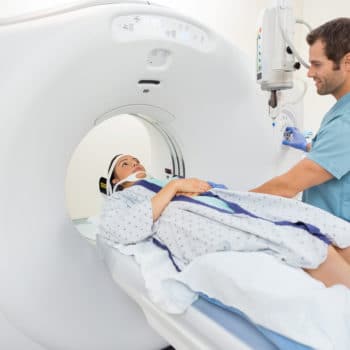Why We Love It
-
$44,030Potential Avg. Salary
-
16.3%Job Growth Rate
-
Growing DemandJob Outlook
-
Don't Take Work HomeCareer Attribute
Licensed practical nurses (LPNs) provide basic medical care to patients in hospitals, nursing homes, and doctor’s offices. They generally work under the direction of a registered nurse or physician, and they perform tasks like taking blood pressure, inserting catheters, changing bandages, and collecting samples.
Recommended Schools
What is a Licensed Practical Nurse (LPN)?
The following job responsibilities are common for individuals in licensed practical nurse roles:
- Check on patients in hospitals regularly and make sure patients are comfortable and stable
- Assist registered nurses (RNs) and doctors by performing basic tasks like taking blood pressure, measuring oxygen levels, and inserting catheters
- Converse with patients to determine conditions, and report concerns back to RNs and doctors
- Update patient medical records
- Assist patients with routine tasks like changing clothes, showering, and using the restroom
A Day in the Life
Licensed practical nurses (LPNs) help care for patients by assisting registered nurses (RNs) and doctors with basic care tasks. Often, when patients are staying in hospitals, it’s LPNs that perform ongoing care. They monitor patients’ conditions throughout the day, take their blood pressure regularly, deliver medications prescribed by the doctor, and assist patients with routine tasks like changing clothes and using the restroom. They also converse with patients to identify issues to report back to doctors.
While most LPNs provide basic care, the tasks they’re able to perform is governed largely by their state of practice. Each state has its own laws and regulations that dictate the care that LPNs can administer. In some states, LPNs may be allowed to administer IVs, but in other states, IV administration must be performed by an RN or doctor. In large part, the tasks an LPN performs day-to-day depends on the tasks he/she is allowed to perform based on licensing rules and the laws of the state of practice.
Licensed practical nurses may also work to help educate patients on how to care for themselves or family members. They may help reinforce breastfeeding techniques, discuss dietary restrictions with patients suffering from a new medical condition, or teach new parents how to properly hold and care for their newborns. Often, patients have more contact with LPNs than any other medical professional during a hospital stay, so they get to know and care for their patients more closely than other roles.
Typical Work Schedule
Most licensed practical nurses (LPNs) work full-time for 40 hours per week distributed on five days. Your schedule as an LPN should also include working on nights, weekends, and holidays on a regular basis since health care is needed around the clock. In addition, nursing shifts may often be longer than eight hours which is usually part of shorter workweek. Accordingly, you will expect to have reasonable working hours while you should flexible how these hours are distributed on your week. However, LPNs job can be exhausting as you will be expected to be able to stand on their feet most of the day, help lift or move patients and assist the patients with their medical needs.
Projected Job Growth
According to the US Bureau of Labor Statistics, the employment of LPNs is expected to increase by 9 % from 2019 to 2029 which is much faster than the average for all other jobs. This is mainly due to the fact that as the population ages increasing the need to more advanced health care. The aging of the population will also result in increasing the rate of diabetes, obesity and other chronic conditions. Accordingly, there will be more vacancies for LPNs in medical institutes as well as residential spaces to take care of older patients. You should not have problems in finding a good career opportunity if you have the proper qualifications and licensing to work in the field. You may also consider working in conditions in rural and medically underserved areas where more chances are currently available as the government aims at improving the medical services at such areas. Working in underserved area is usually more financially rewarding compared to urban areas. Additionally, having specific education, experience and certification in a specialty area such as gerontology or intravenous (IV) therapy will give you better opportunities amongst the competition.
Career Progression
- Early Career: Certified Nurse Assistant (CNA), Licensed Practical Nurse (LPN)
- Mid-Career: Registered Nurse (RN)
- Late Career: Nurse Practitioner (NP), Nurse Anesthetist (CRNA), Nurse Midwife (CNM)
Typical Employers
LPNs are typically hired by hospitals of different sizes and districts whether they were local or private. They can also get employed by nursing and residential care facilities. Another career option for LPNs includes offices of physicians of private practices as well as providing individual home healthcare services.
Recommended Schools
How To Become a Licensed Practical Nurse (LPN)
The first step to becoming a licensed practical nurse is earning a certificate from an accredited institution. Nursing and LPN certificate programs usually require a year of study and can be found at community, technical, and vocational colleges. In a certificate program, you’ll study nursing and biology concepts in a classroom environment, and you’ll also engage in internships where you train under a professional LPN, RN, or physician.
After completing the certificate program, you’ll need to become licensed to work as a nurse in your state. To become licensed, you need to pass the National Council Licensure Examination. With the proper certification and licensure, you should be able to find work as an LPN in hospitals and other medical facilities in your state. You may also want to expand your skillset by pursuing additional certifications in CPR, IV therapy, or gerontology.
LPNs who want to advance later in their careers are in a good position to become RNs or nurse practitioners. To become an RN, you’ll need to return to school to complete a bachelor’s degree, and nurse practitioners must have both a bachelor’s and master’s degree in nursing. In good news, the credits you earned in your LPN certificate can often be transferred and applied to reduce the number of credits you have to take to earn your bachelor’s degree if you pursue promotions later on.
Licensed Practical Nurse (LPN) Salary Data
We’ve provided you the following to learn more about this career. The salary and growth data on this page comes from recently published Bureau of Labor Statistics data while the recommendations and editorial content are based on our research.
National Anual Salary
Low Range
$36,300Average
$44,030High Range
$59,510National Hourly Wage
Low Range
$17/hrAverage
$21/hrHigh Range
$29/hrHow do Licensed Practical Nurse (LPN) salaries stack up to other jobs across the country? Based on the latest jobs data nationwide, Licensed Practical Nurse (LPN)'s can make an average annual salary of $44,030, or $21 per hour. This makes it an Above Average Salary. On the lower end, they can make $36,300 or $17 per hour, perhaps when just starting out or based on the state you live in.
Salary Rankings And Facts
#468 Nationally for All Careers
Programs and Degrees
Here are the most common degrees for becoming a Licensed Practical Nurse (LPN). a is usually recommended and specifically a degree or coursework that prepares you for the particular field, see below.
Highest Education Among Licensed Practical Nurse (LPN)s
- 0.4% Doctorate
- 0.6% Masters
- 4.8% Bachelors
- 18.7% Associates
- 55.4% College
- 18.6% High School
- 1.4% Less than High School
Job Growth Projections and Forecast
2014 Total Jobs
719,9002024 Est. Jobs
837,200Job Growth Rate
16.3%Est. New Jobs
117,300How does Licensed Practical Nurse (LPN) job growth stack up to other jobs across the country? By 2024, there will be a change of 117,300 jobs for a total of 837,200 people employed in the career nationwide. This is a 16.3% change in growth over the next ten years, giving the career a growth rate nationwide of Below Average.
Growth Rankings And Facts
#89 Nationally for All Careers
What Companies Employ The Most Licensed Practical Nurse (LPN)s
| Industry | Current Jobs | New Jobs Needed | % Increase |
|---|---|---|---|
| Nursing care facilities (skilled nursing facilities) | 212,100 | 13,500 | 14% |
| Offices of physicians | 92,400 | 20,800 | 21% |
| General medical and surgical hospitals; private | 79,900 | -11,500 | -12% |














